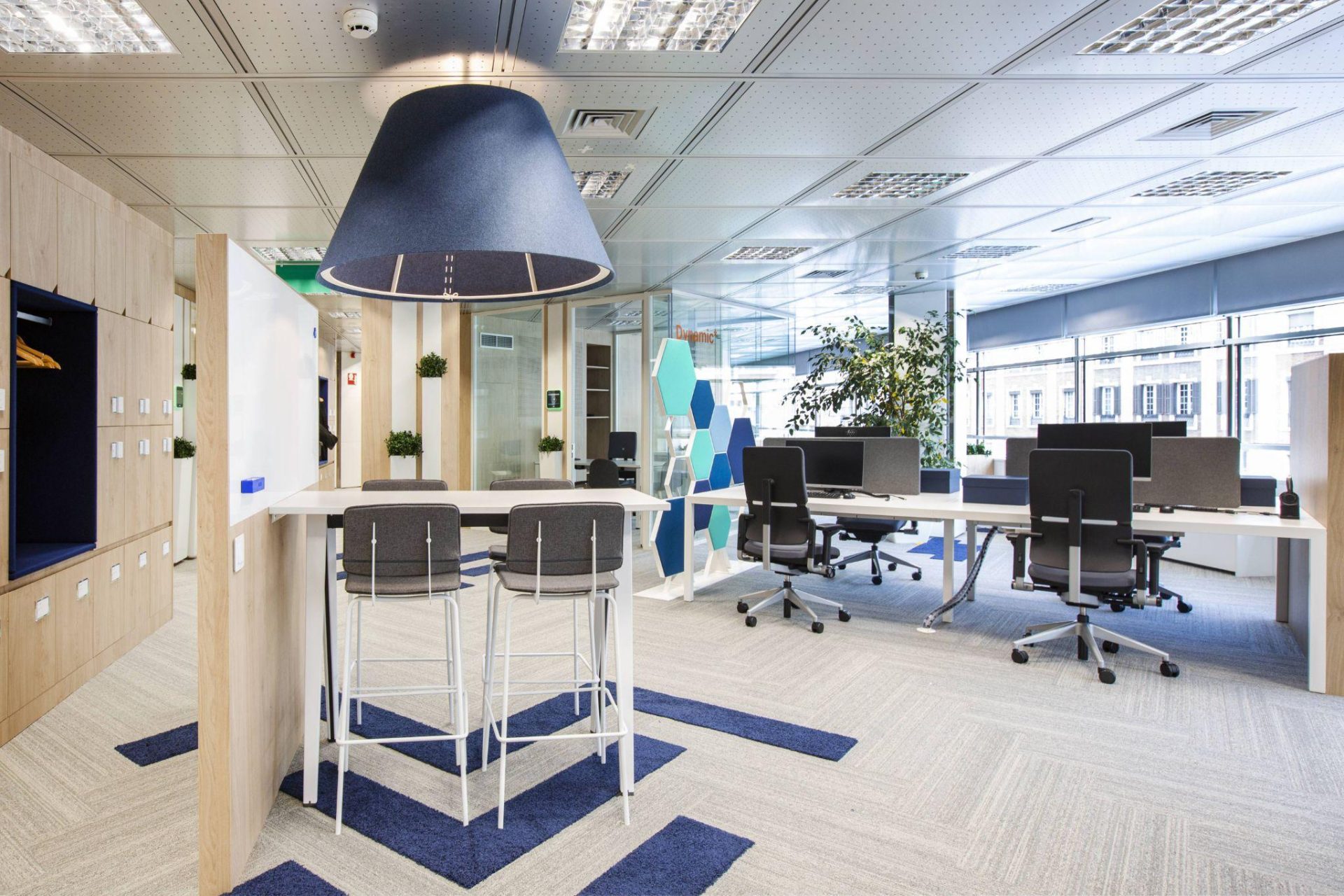
Ergonomics at work
Find out how ergonomics in the workplace is essential for good occupational health.
Interaction between each and every one of the disciplines that make up occupational hazard prevention, i.e. safety, hygiene, occupational medicine, ergonomics and psychosociology, is necessary for a worker to achieve well-being and job satisfaction.
What is ergonomics?
According to the International Ergonomics Association, ergonomics is the body of scientific knowledge aimed at improving work, its systems, products and environments to suit people’s physical and mental capabilities and limitations.
The aim of this discipline is to adapt the work to the main needs of the employee and to facilitate the analysis of the working conditions, as well as the possible injuries that postures, movements and forces can cause, taking into account the conditions of the workplace, such as lighting, furniture, site access, etc.
There are different types of ergonomics that need to be studied and analysed:
- Systems, which are mainly dedicated to the work itself.
- Correction, which aims to prevent bad habits at work, which are often very common.
- Geometrics.
- Time-related.
- Environmental.
- Dedicated to hardware and software platforms.
The importance of ergonomics at work
It is essential for worker comfort to be a priority in all companies. Thanks to ergonomics, workstations are available that are adapted to the needs of the worker, i.e. it is not the body that has to adapt to the object, but the other way round.
Benefits of ergonomics
- Safety and prevention of occupational hazards.
- Prevention of musculoskeletal pain in employees.
- Increased employee productivity.
- Optimised process efficiency.
- Improved quality of results.
- Increased sense of belonging among workers.
Most common ailments
If the workplace is not adapted to ergonomics regulations, workers may suffer from a series of pathologies due to bad posture. These include:
- Poor blood circulation.
- Back and neck pain. The back should be straight. Avoid bending over the desk.
- Muscle pain caused by poor posture.
- Headaches and migraines.
- Loss of vision and eyestrain.
Ergonomics in the office
Ergonomics in the office serves to optimise the relationship between work objects, our bodies and workers’ postures.
Anthropometry is necessary for the correct design of workplaces. This is the study of each person’s measurements and the adaptation of furniture and objects to their tastes and needs.
Ergonomic office design must meet the business objectives of efficiency and cost-effectiveness
The most important elements and objects are the most common ones: computers, desks, chairs and even the organisation system are key points for good ergonomics in the office.
Computers
The computer is the most common work object and the one that can injure us most easily. For a good screen position, ensure that the top edge of the screen is above eye level. It must also be placed at a distance of more than 40 centimetres.
The screen and keyboard must be facing the user. Last but not least, the mouse must be suitable for left- or right-handed users. Its position should also allow the forearm to rest on the table.
Chairs
The chair is the most important element in the entire office. A good chair will prevent bad postures and muscle cramps. It must be stable, with a backrest that fits snugly against the worker’s back and with the worker’s feet touching the floor.
The material must be breathable and prevent moisture from accumulating. The height and angle of the seat should be adjustable, as should be the armrests, so that they do not hit the edge of the table.
Desks
The office desk should have rounded corners to avoid bumps. In addition, the height of the desk should be in line with the height of the user’s elbows when seated.
The environment
There must be sufficient lighting to work comfortably without vision problems.
If natural light (the best lighting option) is used, direct glare should be avoided.
The noise level in the office is also very important. In a workplace it is not advisable to have any sound that interferes with the ability to concentrate. Avoid noise (<55dB) to improve concentration. Office temperature also affects workers' performance. In summer, the office should ideally be between 23 and 26 °C, while in winter the ideal temperature is between 20 and 24 °C. As we have seen, office ergonomics is an essential factor in the workplace. At AreaZero 2.0 we take all these concepts into account when designing new offices. Are you thinking of moving to a new office? Do you have an idea and want to make it happen? Contact us!




